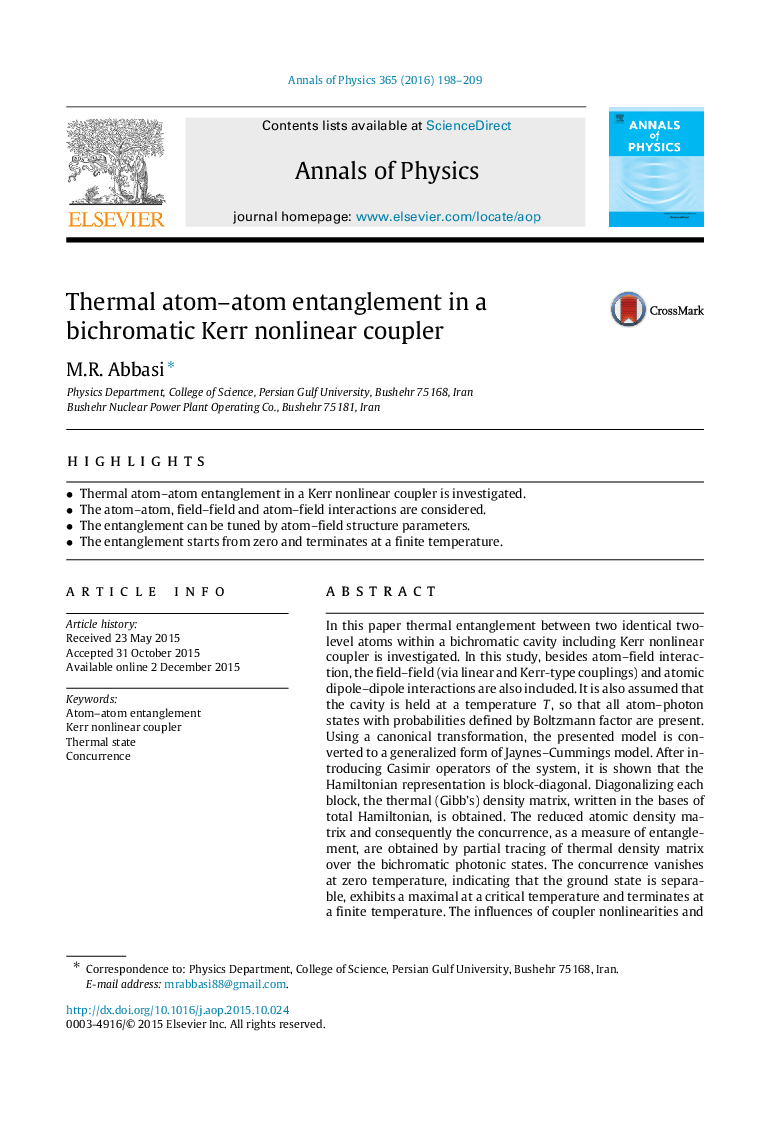| Article ID | Journal | Published Year | Pages | File Type |
|---|---|---|---|---|
| 1857381 | Annals of Physics | 2016 | 12 Pages |
•Thermal atom–atom entanglement in a Kerr nonlinear coupler is investigated.•The atom–atom, field–field and atom–field interactions are considered.•The entanglement can be tuned by atom–field structure parameters.•The entanglement starts from zero and terminates at a finite temperature.
In this paper thermal entanglement between two identical two-level atoms within a bichromatic cavity including Kerr nonlinear coupler is investigated. In this study, besides atom–field interaction, the field–field (via linear and Kerr-type couplings) and atomic dipole–dipole interactions are also included. It is also assumed that the cavity is held at a temperature TT, so that all atom–photon states with probabilities defined by Boltzmann factor are present. Using a canonical transformation, the presented model is converted to a generalized form of Jaynes–Cummings model. After introducing Casimir operators of the system, it is shown that the Hamiltonian representation is block-diagonal. Diagonalizing each block, the thermal (Gibb’s) density matrix, written in the bases of total Hamiltonian, is obtained. The reduced atomic density matrix and consequently the concurrence, as a measure of entanglement, are obtained by partial tracing of thermal density matrix over the bichromatic photonic states. The concurrence vanishes at zero temperature, indicating that the ground state is separable, exhibits a maximal at a critical temperature and terminates at a finite temperature. The influences of coupler nonlinearities and dipole–dipole coupling on the thermal atom–atom entanglement are also addressed in detail.
